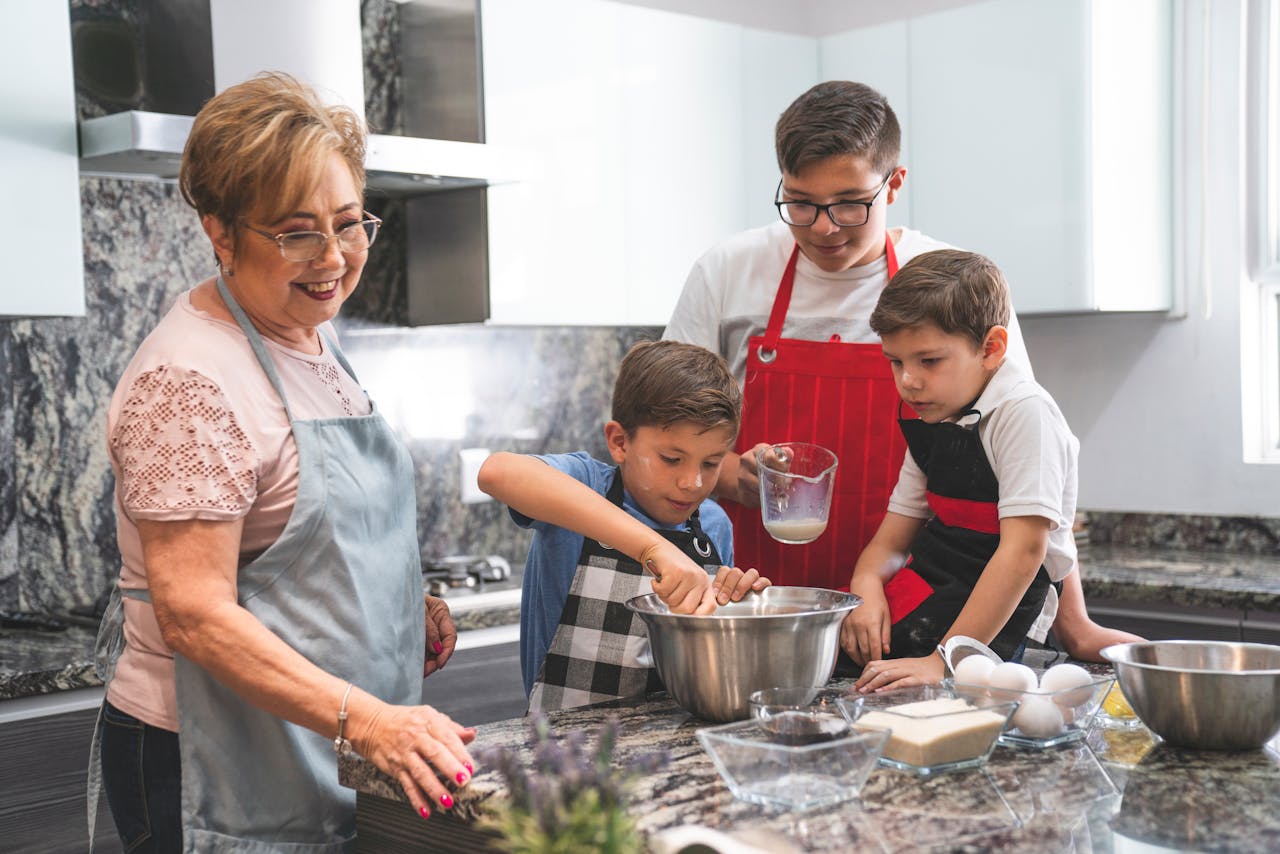A guide to multi-generational living

Like a number of supposedly modern trends, the recent rise in multi-generational living traces its origins back to the Victorian age. In the 18th century, dangerous careers and low life expectancy meant living to see your grandchildren grow up was relatively unusual. Yet as advances in sanitation and healthcare enabled people to live longer, the Victorians embraced the concept of having three generations under one roof, before rising living standards in the 20th century saw a return to smaller family units.
Today, multi-generational living is hugely popular again. It has many benefits, but also some drawbacks which need to be identified and proactively tackled.
First and foremost, it requires an acceptance by all parties to sacrifice a degree of personal privacy, especially when sharing kitchens and bathrooms. Grown adults may find living with their parents again rather strange and mature conversations need to be held about house rules and respecting one another’s privacy. It may be advisable to create a dedicated bank account to cover all household bills, and to allocate responsibility at the outset for things like policy renewals, cleaning, childcare and grocery shopping.
The benefits
Although the rise in multi-generational living is partly being driven by economic factors, it brings a wealth of advantages to everyone involved; the mental health benefits alone could be compelling. Grandparents are surrounded by loved ones, playing an active role in the lives of their children and grandchildren. They have people on-hand to help with things which become more challenging with age and to assist if they experience mobility or health issues.
Working parents will find having enthusiastic childcare freely available to be a revelation, while grandchildren tend to love the attention and affection from relatives who don’t also have to be the primary disciplinarians. Older generations get to share advice, experience and knowledge, while the energy and enthusiasm of younger family members is often infectious. Extra support may also be invaluable at any age while dealing with health issues or money problems. Today’s adolescents are experiencing an epidemic of mental health issues, and extra family support could be hugely beneficial to their emotional wellbeing and long-term development.
Temporary or permanent?
Some multi-generational households are intended to be temporary. They might be driven by a relationship breakup, home renovations or someone relocating back to the UK from overseas. Life is full of changes, from redundancy and new business startups to acute health issues and the start of further education. Ironically, in a major survey published last year, almost ten per cent of respondents cited saving up for a house deposit as a key reason to adopt multi-generational living.
Multi-generational living also provides longer-term opportunities. It enables people to pool resources and purchase a property of a size (or in a location) that would be beyond the reach of two households making separate purchases. Many traditional houses have already been subdivided into lower and upper conversions and modern homes can offer scope to create annexes or wings as well. En-suite bedrooms are perfect for giving older relatives a sense of privacy, especially if an adjacent room serves as a sitting/TV room. Modern properties tend to offer flexible spaces – home office by day, TV room by night – while open-plan kitchens bring everyone together at mealtimes.
Gardens do the same, giving adults a space to socialise in the evenings once children have finished playing outdoors. It may even be possible to construct a garden room to serve as either a den, a home office or a separate lounge. This reduces pressure on internal apartments, giving people more space and privacy.
Back to Latest Posts




